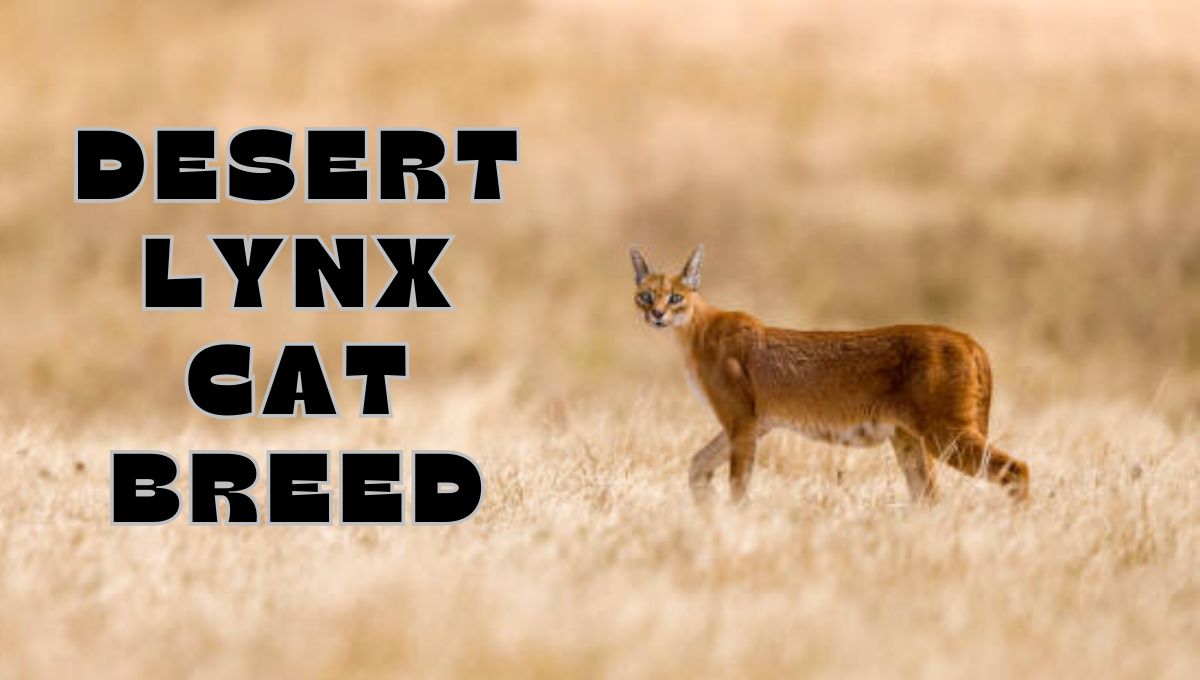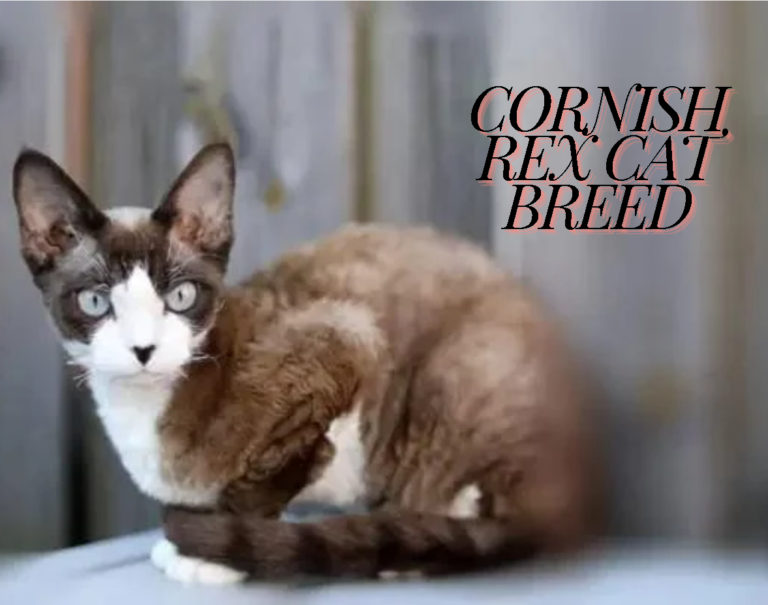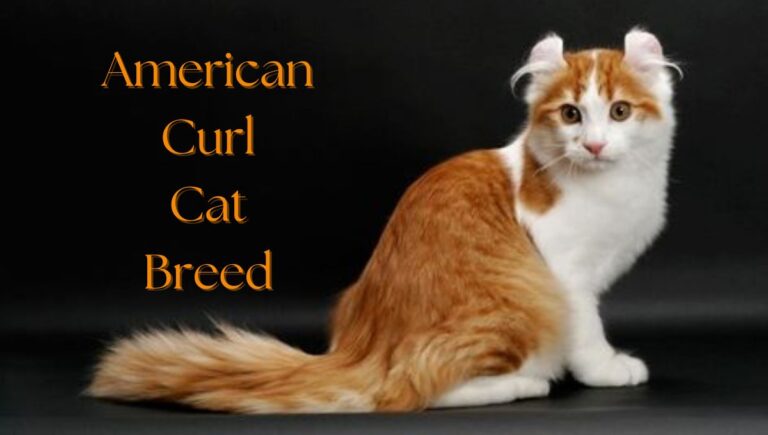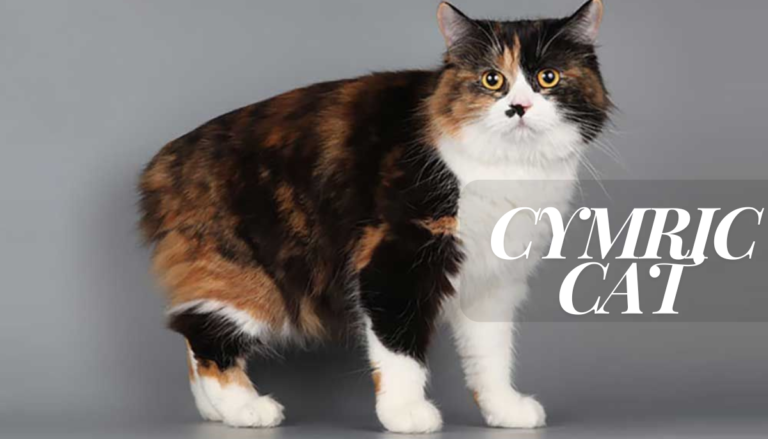Desert lynx Cat Breed
The Desert Lynx cat breed is a captivating feline known for its striking appearance and fascinating personality. Named after the majestic wild lynx, this breed embodies grace, elegance, and a touch of wilderness. With its distinctive features and enigmatic charm, the Desert Lynx has captured the hearts of cat enthusiasts around the world.
One of the key characteristics that sets the Desert Lynx apart is its impressive size and muscular build. These cats often exhibit a robust physique, reminiscent of their wild counterparts. Their large, expressive eyes, adorned with tufts of fur on the tips of their ears, add to their allure and give them an unmistakable air of mystery.
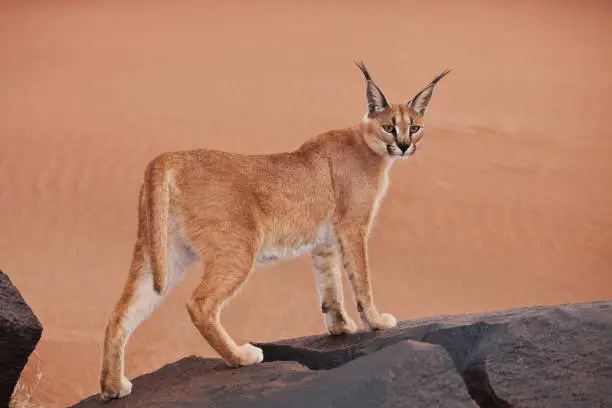
Despite their wild appearance, Desert Lynx cats are renowned for their gentle and affectionate nature. They form strong bonds with their human companions and enjoy spending quality time with their families. Intelligent and curious by nature, they thrive on mental stimulation and interactive play, making them delightful companions for both children and adults alike.
In summary, the Desert Lynx cat breed combines the grace of a domesticated pet with the allure of the wild. With their striking appearance, gentle demeanor, and playful personality, Desert Lynx cats bring a touch of the wilderness into the hearts and homes of those fortunate enough to welcome them as companions.
Table of Contents
I. Origin and History of Desert Lynx Cat Breed :
Origin and History of Desert Lynx Cat Breed :
- Emergence in the United States: The Desert Lynx cat breed originated in the late 20th century in the United States, where breeders aimed to create a domestic cat resembling the wild lynx.
- Influence of American Domestic Cats: While specific breeds used in its development are not well-documented, American domestic cats likely contributed to the Desert Lynx’s genetic makeup, providing foundational stock for the breed.
- Potential Influence of Wildcat Breeds: Breeders may have incorporated traits from wildcat breeds like the Maine Coon and the Bobcat to enhance the Desert Lynx’s resemblance to the lynx.
Geographical Region of Origin :
- Southwestern United States: The breed’s development primarily occurred in the southwestern regions of the United States, where the rugged landscape and wildlife served as inspiration for capturing the essence of the wild lynx.
Characteristics Influenced by Origin :
- Physical Traits: The Desert Lynx exhibits a muscular build, large paws, tufted ears, and a thick, plush coat, reminiscent of its wild lynx namesake.
- Temperamental Adaptations: Despite their wild appearance, Desert Lynx cats have a gentle and sociable temperament, suitable for domestic life.
Folklore and Legends :
- Lack of Widespread Folklore: There is a lack of widespread folklore or legends surrounding the Desert Lynx’s development due to its relatively recent creation. However, its emergence reflects humanity’s fascination with the natural world’s beauty and mystery.
II. Physical Characteristic of Desert Lynx Cats :
| Height | Desert Lynx cats typically have a medium to large-sized body, with males ranging from 10 to 20 inches in height, and females slightly smaller. |
| Weight | On average, Desert Lynx cats weigh between 8 to 18 pounds, with males often being larger and heavier than females. |
| Life Span | The Desert Lynx has a relatively long lifespan, averaging between 12 to 15 years when provided with proper care and veterinary attention. |
| Good With | Desert Lynx cats are known for their affectionate and sociable nature, making them excellent companions for families, children, and other pets. |
| Temperament | These cats typically have a gentle and friendly temperament, enjoying human companionship and forming strong bonds with their families. |
| Intelligence | Desert Lynx cats are intelligent and curious by nature, often displaying problem-solving skills and an eagerness to explore their environment. |
| Shedding Amount | They have a moderate shedding tendency, requiring regular grooming to manage loose fur and prevent matting. |
| Grooming | Regular brushing is recommended to maintain their plush coat and minimize shedding. Additionally, periodic nail trimming and ear cleaning are essential for their overall health and well-being. |
| Exercise Needs | While not overly active, Desert Lynx cats benefit from daily play sessions and opportunities for mental stimulation to keep them physically and mentally fit. |
| Energy Level | They have a moderate energy level, enjoying interactive play and exploring their surroundings but also appreciating quiet moments of relaxation. |
| Meowing Level | While individual vocalizations may vary, Desert Lynx cats are not known to be excessively vocal, with their meowing level typically being moderate to low. |
| Drool amount | Desert Lynx cats typically do not exhibit excessive drooling behavior, with drooling being uncommon in this breed. |
| Coat Length/Texture | They have a dense, water-resistant coat with a soft and plush texture, providing insulation against harsh weather conditions. |
| Colors | Desert Lynx cats come in a variety of colors and patterns, including tabby, solid, tortoiseshell, and bi-color. |
| Patterns | Common coat patterns include mackerel tabby, spotted tabby, tortoiseshell, calico, and solid coloration. |
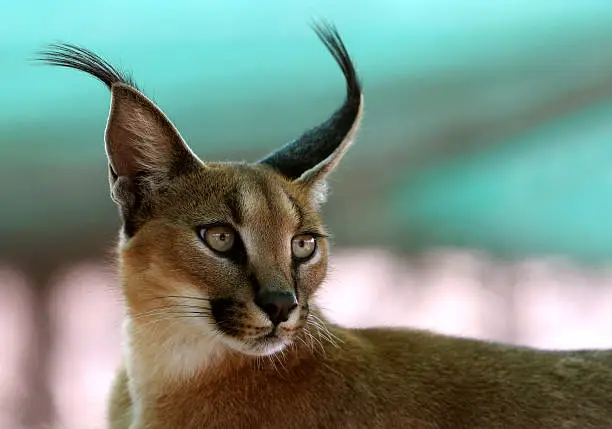
Size:
- The Desert Lynx breed typically has a medium to large-sized body.
- Male Desert Lynx cats generally weigh between 10 to 20 pounds, while females are slightly smaller, ranging from 8 to 15 pounds.
Coat Type:
- The coat of the Desert Lynx is dense, water-resistant, and plush, providing insulation against harsh weather conditions.
Color Variations:
- Desert Lynx cats come in a variety of colors and patterns, including tabby, solid, tortoiseshell, and bi-color.
- Common coat patterns include mackerel tabby, spotted tabby, tortoiseshell, calico, and solid coloration.
Measurements and Weight Ranges:
- Height: Males typically range from 10 to 20 inches, while females are slightly smaller.
- Weight: Males generally weigh between 10 to 20 pounds, and females weigh between 8 to 15 pounds.
Coat Texture and Length:
- The Desert Lynx’s coat has a soft and plush texture.
- It is of medium length, providing a luxurious feel while remaining manageable.
Distinctive Features:
- One of the most notable features of the Desert Lynx is its tufted ears, resembling those of the wild lynx.
- These cats may also have tufts of fur on their ear tips, adding to their distinctive appearance.
- Desert Lynx cats often have large, expressive eyes, which contribute to their enigmatic charm.
Tail Characteristics:
- The tail of the Desert Lynx is typically medium in length, proportionate to the body.
- While not as bushy as some other breeds, the tail is well-furred and adds to the overall balance and elegance of the cat’s appearance.
Unique Physical Traits:
- The Desert Lynx’s combination of muscular build, tufted ears, and plush coat sets it apart from other breeds.
- Their resemblance to the wild lynx, combined with their gentle and sociable temperament, makes them a unique and captivating breed.
III. Temperament and Personality of Desert Lynx Cats :
The Desert Lynx cat breed is renowned for its gentle and affectionate nature, making it an ideal companion for families and individuals alike. These cats typically exhibit a friendly and sociable demeanor, enjoying human companionship and forming strong bonds with their families. They are known for their playful and curious nature, often engaging in interactive play and exploring their surroundings with enthusiasm.
Positive Traits:
- Affectionate: Desert Lynx cats are affectionate and enjoy spending time with their human companions. They often seek out attention and affection from their family members.
- Sociable: They are generally sociable and get along well with other pets, making them an excellent choice for multi-pet households.
- Playful: Desert Lynx cats have a playful and energetic personality, enjoying interactive play sessions and toys that stimulate their natural instincts.
Challenging Traits:
- Independence: While they enjoy human company, Desert Lynx cats also value their independence and may appreciate some alone time.
- Strong Hunting Instincts: Due to their heritage, Desert Lynx cats may exhibit strong hunting instincts and may be prone to chasing small animals or birds.
- Vocalization: Some Desert Lynx cats may be more vocal than others, expressing themselves through meows, chirps, or other vocalizations.
Managing Breed-Specific Behaviors:
- Environmental Enrichment: Providing plenty of toys, scratching posts, and opportunities for play can help satisfy the Desert Lynx’s need for mental and physical stimulation.
- Training and Socialization: Early training and socialization can help reinforce desired behaviors and prevent undesirable ones, such as excessive scratching or aggression.
- Interactive Play: Engaging in interactive play sessions with your Desert Lynx cat can help channel their energy in a positive way and strengthen the bond between you and your pet.
- Understanding Their Needs: Understanding the Desert Lynx’s natural instincts and tendencies can help you better address any breed-specific behaviors and ensure a harmonious relationship with your cat.
Overall, the Desert Lynx cat breed is known for its friendly, sociable, and playful personality. With proper care, training, and understanding of their needs, Desert Lynx cats can make wonderful companions for families and individuals alike.
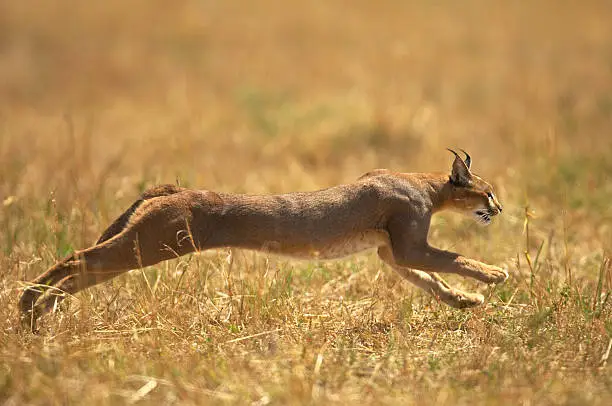
IV. Care and Maintenance of Desert Lynx Cat Breed :
Grooming Needs :
- Regular Brushing: The Desert Lynx’s plush coat requires regular brushing to prevent matting and reduce shedding. Aim for at least a few brushing sessions per week.
- Ear Cleaning: Check and clean your cat’s ears regularly to prevent wax buildup and potential infections, especially considering their tufted ear structure.
- Nail Trimming: Trim your cat’s nails every few weeks to prevent them from becoming too long and causing discomfort or potential injury.
Health Consideration :
- Regular Veterinary Check-ups: Schedule regular veterinary visits to monitor your Desert Lynx’s health and address any potential issues promptly. Vaccinations, parasite control, and dental care are essential components of their healthcare routine.
- Spaying/Neutering: Consider spaying or neutering your Desert Lynx to prevent unwanted litters and reduce the risk of certain health issues.
- Awareness of Breed-Specific Conditions: While generally healthy, Desert Lynx cats may be prone to certain health conditions such as hip dysplasia or joint problems due to their size. Be vigilant for any signs of discomfort or abnormal behavior and consult with your veterinarian if necessary.
Nutrition :
- Balanced Diet: Feed your Desert Lynx a balanced diet formulated for their age, weight, and activity level. High-quality commercial cat food that meets their nutritional needs is recommended.
- Portion Control: Monitor your cat’s food intake and avoid overfeeding to prevent obesity, which can lead to health issues such as diabetes and joint problems.
- Fresh Water: Ensure your cat has access to fresh, clean water at all times to stay hydrated and maintain overall health.
Exercise :
- Interactive Play: Engage your Desert Lynx in interactive play sessions daily to provide mental stimulation and physical exercise. Toys like wand toys, laser pointers, and puzzle feeders can keep them entertained.
- Vertical Space: Provide vertical space such as cat trees or shelves for climbing and perching, satisfying their natural desire to explore and survey their environment.
V. Suitability of Desert Lynx Cats :
Compatibility with Children and Other Animals:
- Children: Desert Lynx cats are generally well-suited for families with children. They are affectionate and playful, enjoying interactions with kids who treat them with respect and gentleness.
- Other Pets: Desert Lynx cats typically get along well with other pets, including dogs and other cats, especially if they are introduced gradually and given time to adjust to each other’s presence.
Special Considerations for Multi-Pet Households:
- Introduction Process: When introducing a Desert Lynx to existing pets, take it slow and allow for gradual introductions in a controlled environment. Supervise interactions initially and provide separate spaces for each pet if needed.
- Space and Resources: Ensure that each pet has access to their own food, water, litter box, and resting areas to prevent resource guarding or territorial issues.
Environmental Needs:
- Space: Desert Lynx cats appreciate ample space to roam and explore, so providing a spacious living environment is beneficial. Cat trees, shelves, and perches can offer vertical space for climbing and surveying their surroundings.
- Special Environment: While not necessarily requiring a special environment, Desert Lynx cats may enjoy access to outdoor spaces such as enclosed patios or catio areas where they can safely experience the outdoors.
- Temperature Considerations: Desert Lynx cats are adaptable to various temperatures but should have access to a comfortable indoor environment with climate control to ensure their well-being in extreme weather conditions.
Overall, Desert Lynx cats can be excellent additions to families with children and other pets, provided that proper introductions are made and each pet’s individual needs are met. With adequate space, resources, and consideration for their environmental needs, Desert Lynx cats can settle well into various home environments and thrive as beloved companions.
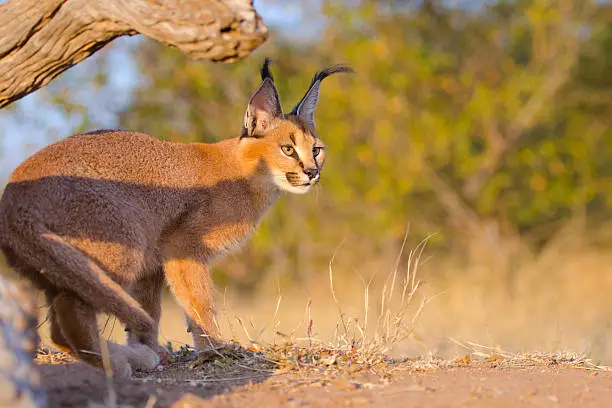
VI. Adoption and Breeder Consideration of Desert Lynx Cat Breed :
Adoption from Shelters or Rescue Organizations:
- Encourage adopting a Desert Lynx cat from shelters or rescue organizations. Highlight the benefits of providing a loving home to a cat in need, such as saving a life, reducing pet overpopulation, and experiencing the joy of giving a second chance to a deserving animal.
- Adopting from shelters often includes benefits such as spaying/neutering, vaccinations, and microchipping, which can save money and time compared to acquiring a cat from other sources.
Selecting a Reputable Breeder:
- When purchasing a purebred Desert Lynx from a breeder, emphasize the importance of selecting a reputable breeder who practices ethical breeding standards.
- Look for breeders who prioritize the health and well-being of their cats, conduct health screenings for genetic conditions, and provide proper care and socialization for kittens.
- Research the breeder’s reputation, visit their facilities if possible, and ask for references or testimonials from previous clients to ensure they are reputable and trustworthy.
Cost Considerations and Adoption Fees:
- Discuss the potential cost considerations associated with adopting or purchasing a Desert Lynx cat. Adoption fees from shelters or rescue organizations are typically lower than purchasing from a breeder but may still vary depending on location and services provided.
- Purchasing a purebred Desert Lynx from a reputable breeder may involve higher upfront costs due to the breeder’s investment in quality breeding practices, health screenings, and pedigree documentation.
- Consider the long-term financial commitment of owning a Desert Lynx cat, including expenses such as food, grooming supplies, veterinary care, and potential unexpected medical costs.
By considering adoption from shelters or rescue organizations and selecting a reputable breeder if purchasing a purebred, prospective Desert Lynx owners can make informed decisions that prioritize the well-being of the cats while also meeting their own preferences and needs.
VII. Conclusion
Desert Lynx cats are a unique and captivating breed known for their striking appearance and gentle temperament. Resembling their wild lynx counterparts, these felines boast medium to large-sized bodies, plush coats, and distinctive tufted ears. Beyond their physical traits, Desert Lynx cats exhibit an affectionate and sociable nature, making them ideal companions for families and individuals alike. Their playful disposition and strong bonds with their human companions enrich the lives of those fortunate enough to share their home.
Responsible ownership is paramount when considering a Desert Lynx cat. Proper care entails providing regular grooming, exercise, nutritious diet, and veterinary attention to ensure their well-being throughout their lives. Prospective owners should also consider the financial and time commitments associated with owning a Desert Lynx, as well as ensuring compatibility with their lifestyle and living situation. By understanding and committing to these responsibilities, owners can provide a loving and nurturing environment for their Desert Lynx companion.
Bringing a Desert Lynx into one’s home is a rewarding experience, but it comes with significant responsibilities. It’s essential for prospective owners to thoroughly research the breed, understand their needs, and assess their ability to meet those needs before making the decision to bring a Desert Lynx into their lives. By prioritizing responsible ownership and proper care, prospective owners can ensure a fulfilling and enriching relationship with their Desert Lynx cat, fostering a bond that will bring joy and companionship for years to come.
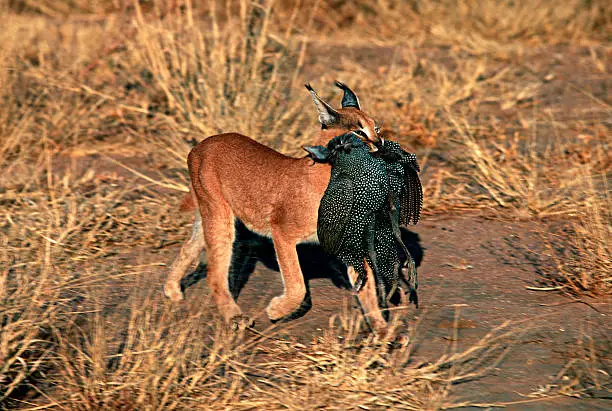
FAQ about Desert Lynx Cat Breed :
How do Desert Lynx cats behave around children?
Desert Lynx cats typically exhibit a gentle and tolerant temperament, making them well-suited for households with children. However, proper supervision and teaching children how to interact respectfully with cats are essential to ensure positive interactions and prevent any accidental harm to the cat or child.
Are Desert Lynx cats indoor or outdoor cats?
Desert Lynx cats can adapt well to both indoor and outdoor environments. However, providing a safe and secure outdoor space, such as an enclosed patio or catio, allows them to experience the outdoors safely while minimizing the risks associated with roaming freely outdoors.
Are Desert Lynx cats hypoallergenic?
While no cat breed is truly hypoallergenic, Desert Lynx cats are known to produce fewer allergens compared to some other breeds. However, individual reactions may vary, so it’s essential for allergy sufferers to spend time with a Desert Lynx cat before bringing one into their home.
Are Desert Lynx cats vocal?
Desert Lynx cats are not known for being excessively vocal, but they may communicate through meows, chirps, or other vocalizations to express their needs or desires. Each cat’s vocal tendencies may vary, with some being more vocal than others.

